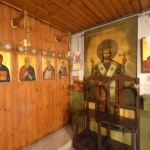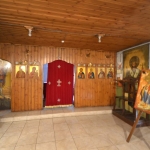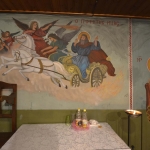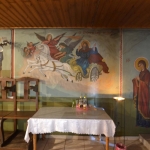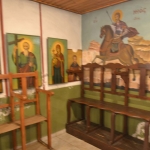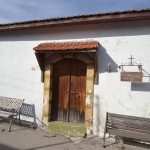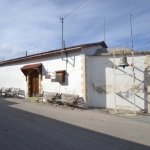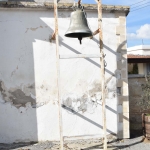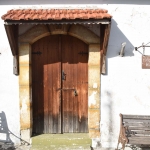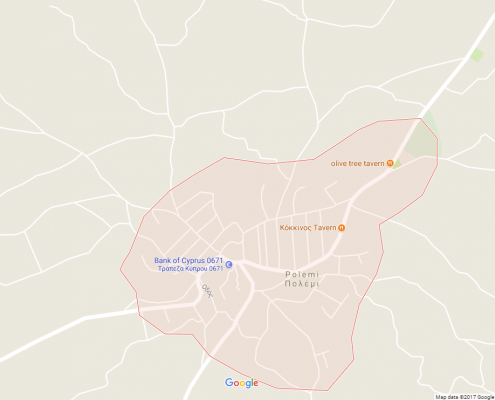Church of Panagia Chryseleousa
The main church of the village is located on the north of the village and is dedicated to Panagia Chryseleousa. The church was built during the 12th and 13th century and was expanded at the beginning of the 18th century, around 1723.
To be more explicit, the southern wall of the initial construction was demolished in 1723, in order for new rooms to be added. The expansion on the south part of the church is saved until today, despite the destructive earthquake of 1953. However, the church was seriously damaged. For instance, the bell tower, which was built in 1723, was completely destroyed and some years after the earthquake, another was built. However, the style of the new bell tower “does not match with the old and time-honored church”.
The older part of the church belonging to the 12th century, namely the part that survived the earthquake, falls under the umbrella of one-roomed, cross-shaped churches with a cupola. What is more, it incorporates a narthex of Byzantine style. The additional part of the church is architectonically a mere tectonic basilica. The dimensions of the construction reach sixteen meters in length and thirteen in width.
Towards the end of the 20th century, in 1962, the church was renovated. Specifically, the white marbles were replaced with darker mosaic. During the same year, new roof tiles were installed.
What is extremely imposing is the wooden carved iconostasis, which consists of “rare carvings”. Unfortunately, information regarding its creator and whether it was made prior to 1723 is not available.
The iconostasis is decorated with icons from the 15th century and later. Amongst the icons of the 15th century, four of them are despotic, of Panagia Chryseleousa, of Gregory the Theologian, and John the Baptist. The icons depicting the festivities cycle of the iconostasis (Dodekarto) also belong to the 15th century. Finally, at the centre of the iconostasis is bejeweled with icons from the 15th and 16th century, such as the icon of Panagia Deomeni (Praying Mary), Christ the Life-giver, and Apostles Peter and Paul.
There are some murals in the older part of the church, which seem to have been covered by a thick layer of plaster, possibly as a try to avoid depredation, during the years of Turkish domination. It is worth mentioning that during the summer of 2006, the restoration of the icons was programmed by the Antiquity Department.
Church of Chryseleousa
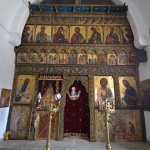
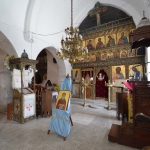
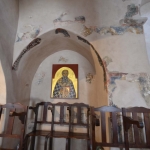
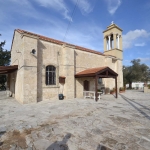
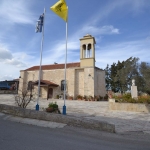
Chapels
The village is surrounded by fourteen chapels. Most of them have been deserted. The perimetrical arrangement of the chapels aimed at creating a “fortress”, a kind of safety zone against diseases such as swine fever and typhus.
The deserted chapels of the village are dedicated to Saint Mamas, Saint Vassilios, Saint Georgios (George), Apostles Peter and Paul, Saint Theodore, Saint Nepios, Saint Kournoutas, Saint Photios, of the Holy Cross and Saint Anastasia.
Only three chapels are saved, of Prophet Elias, Saint Marina and Saint George. The chapels of Saint Elias and Saint Marina have been reconstructed according to the design of the older constructions. The chapel of Saint Elias was reconstructed around 1920 whilst the chapel of Saint Marina around 2003. In 2005 a chapel dedicated to Saint George was built.
Sources:
Mr. Andreas Onisiforou Polemitis
Polemi Community Council
Chapel of Timios Stavros
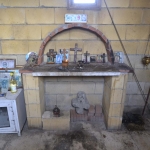
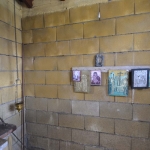
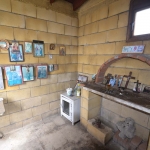
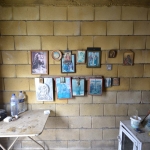
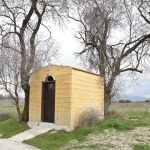
Chapel of Agia Marina
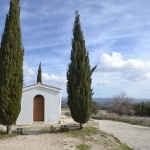
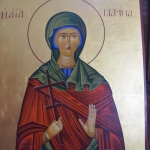
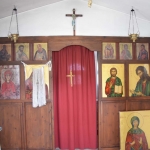
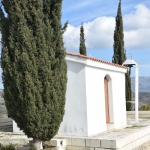
Chapel of Agios Mamas
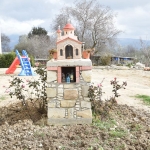
Chapel of Agios Georgios
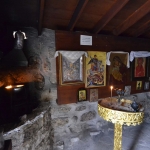
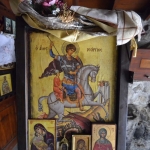
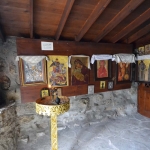
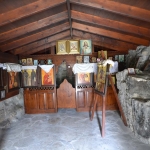
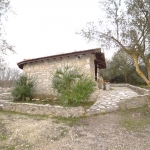
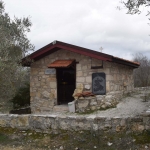
Chapel of Agios Anastasios
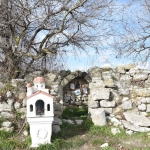
Chapel of Prophet Elias
